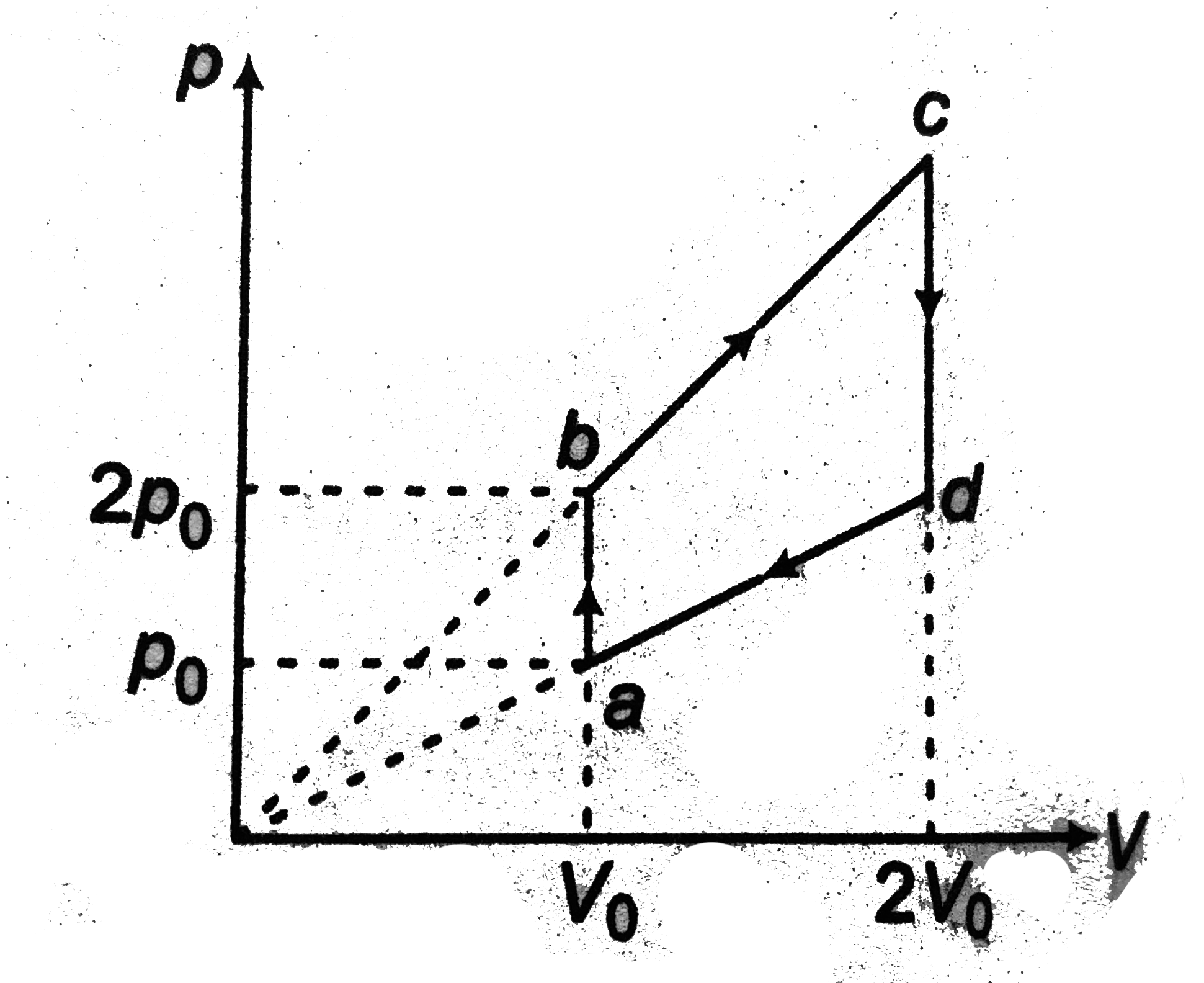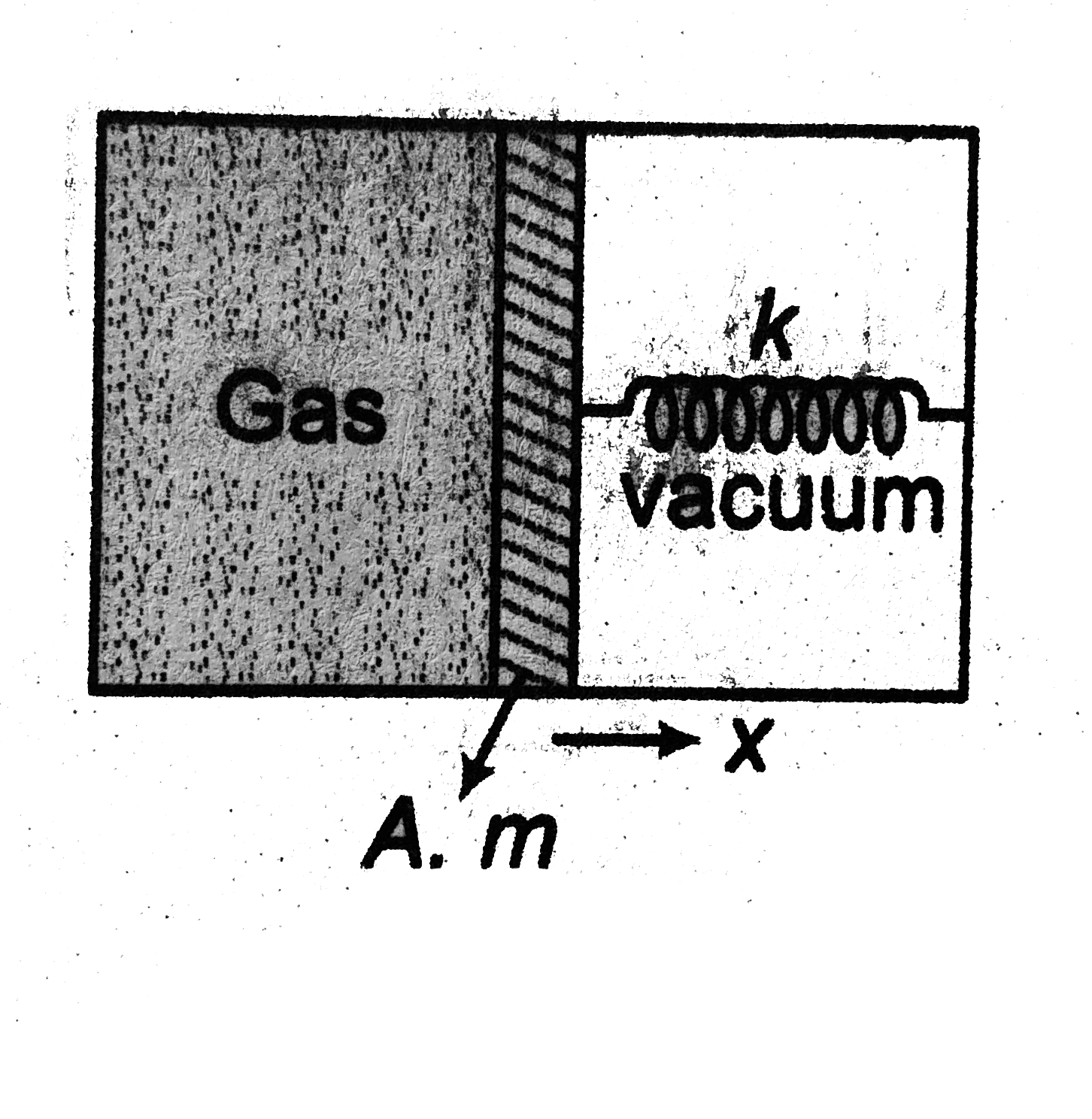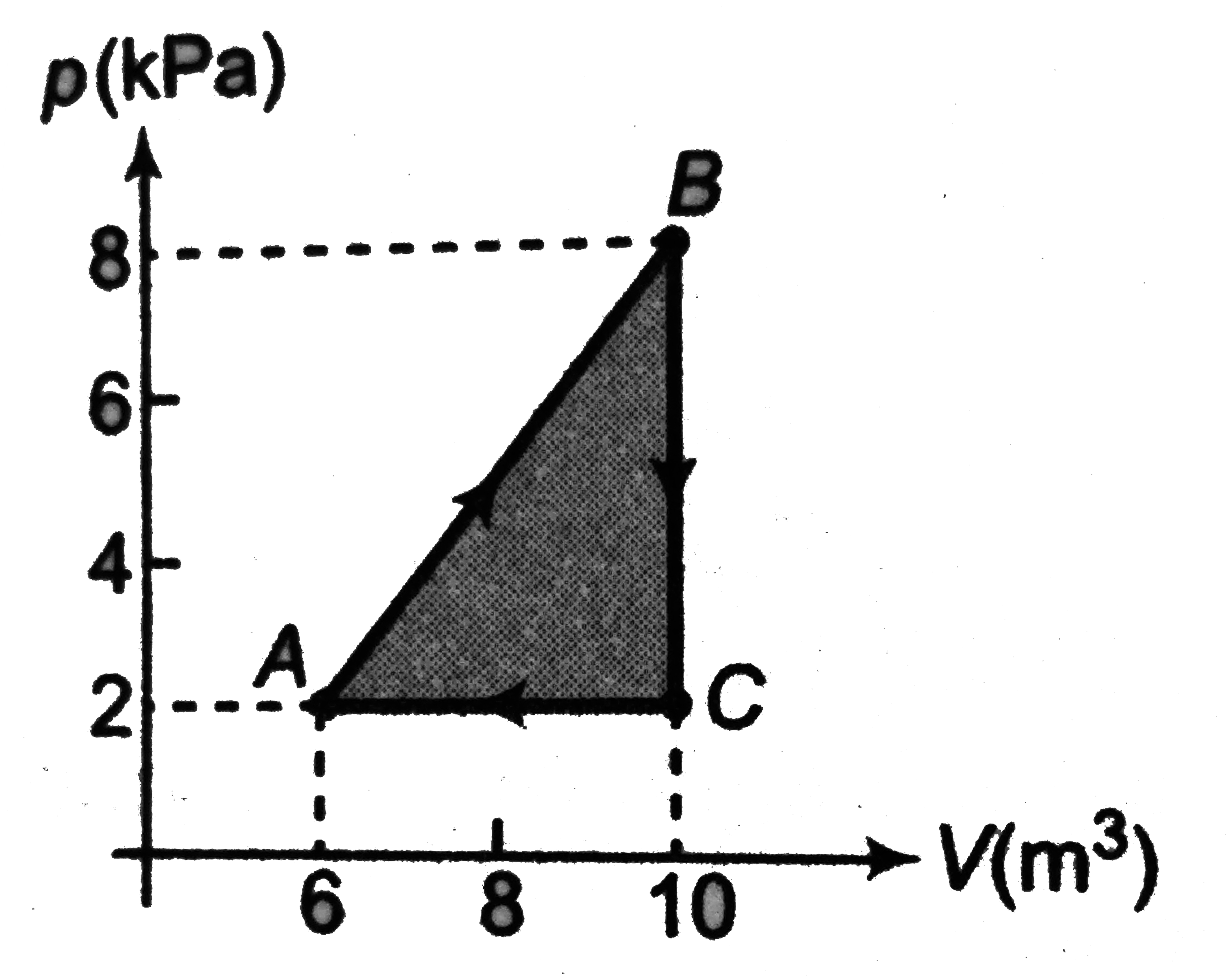Complete Solutions to Example of chapter LAWS OF THERMODYNAMICS of Class 11 book with complete answers and questions
| Class 11 | PHYSICS |
| Chapter | LAWS OF THERMODYNAMICS |
| DC PANDEY | Example |
| Number Of Questions | 20 |
| Academic Year | 2023-24 |
When a system goes from state A to state B, it is supplied with 400 J of heat and it does 100 J of work.
(a) For this transition, what is the system's change in internal energy?
(b) If the system moves from B to A, what is the change in internal energy?
(c) If in moving from A to B along a different path in which `W_(AB)^'=400J` of work is done on the system, how much heat does it absorb?
View SolutionMethod 1 of Q
Temperature of two moles of a monoatomic gas is increased by 300 K in the process `p prop V`.
(a) Find molar heat capacity of the gas in the given process.
(b) Find heat given to the gas in that.
View SolutionMethod 2 of Q
In a given process work done on a gas is 40 J and increases in its internal energy is 10J. Find heat given or taken to/from the gas in this process.
View SolutionMethod 1 of `DeltaU`
Temperature of two moles of a monoatomic gas is increased by 600 K in a given process. Find change in internal energy of the gas.
View SolutionMethod 2 of `DeltaU`
Work done by a gas in a given process is `-20J`. Heat given to the gas is 60J. Find change in internal energy of the gas.
View SolutionMethod 1 of W
By integration, make expressions of work done by gas in
(a) Isobaric process (p=constant)
(b) Isothermal process (pV=constant)
(c) Adiabatic process (`PV^gamma=` constant)
View SolutionMethod 2 of W
In the given p-V diagram, find

(a) pressures at c and d
(b) work done in different processes separately
(c) work done in complete cycle abcd.
View SolutionMethod 3 of W
Mass of a piston shown in Fig. is m and area of cross-section is A. Initially spring is in its natural length. Find work done by the gas.

View SolutionMethod 4 of W
The temperature of n-moles of an ideal gas is increased from `T_0` to `2T_0` through a process `p=alpha/T`. Find work done in this process.
View SolutionMethod 5 of W
Heat taken from a gas in a process is 80 J and increase in internal energy of the gas is 20J. Find work done by the gas in the given process.
View Solutionp-V plots for two gases during adiabatic processes are shown in the figure. Plots 1 and 2 should correspond respectively to

View SolutionStarting with the same initial conditions, an ideal gas expands from volume `V_1` to `V_2` in three different ways, the work done by the gas is `W_1` if the process is purely isothermal, `W_2` if purely isobaric and `W_3` if purely adiabatic, then
View SolutionWhen an ideal diatomic gas is heated at constant pressure, the fraction of the heat energy supplied, which increases the internal energy of the gas, is
View SolutionWhat is the heat input needed to raise the temperature of 2 moles of helium gas from `0^@C` to `100^@C`
`(a) at constant volume,
(b) at constant pressure?
(c) what is the work done by the gas in part (b)?
Give your answer in terms of `R`.
View SolutionAn ideal monoatomic gas at 300K expands adiabatically to twice its volume. What is the final temperature?
View SolutionAn ideal gas is taken through a cyclic thermodynamic process through four steps. The amounts of heat involved in these steps are `Q_1=5960J`, `Q_2=-5585J`, `Q_3=-2980J` and `Q_4=3645J` respectively. The corresponding quantities of work involved are `W_1=2200J`, `W_2=-825J`, `W_3=-1100J` and `W_4` respectively.
(a) Find the value of `W_4`.
(b) What are the efficiency of the cycle?
View SolutionThe density versus pressure graph of one mole of an ideal monatomic gas undergoing a cyclic process is shown in figure. The molecular mass of the gas is M.

(a) Find the work done in each process.
(b) Find heat rejected by gas in one complete cycle.
(c) Find the effiency of the cycle.
View SolutionCarnot engine takes one thousand kilo calories of heat from a reseervoir at `827^@C` and exhausts it to a sink at `27^@C`. How, much work does it perform? What is the efficiency of the engine?
View SolutionIn a refrigerator, heat from inside at 277K is transferred to a room at 300K. How many joules of heat shall be delivered to the room for each joule of electrical energy consumed ideally?
View SolutionCalculate the least amount of work that must be done to freeze one gram of wate at `0^@C` by means of a refrigerator. Temperature of surroundings is `27^@C`. How much heat is passed on the surroundings in this process? Latent heat of fusion `L=80cal//g`.
View Solution
Example questions and complete solutions for chapter LAWS OF THERMODYNAMICS of DC PANDEY PHYSICS (HINGLISH) of Class 11
All Exercises from DC PANDEY Class 11 PHYSICS LAWS OF THERMODYNAMICS
- Example
- Example Type 1
- Example Type 2
- Example Type 3
- Exercise 21.1
- Exercise 21.2
- Exercise 21.3
- Exercise 21.4
- Level 1 Assertion And Reason
- Level 1 Objective
- Level 1 Objective Questions
- Level 1 Subjective
- Level 2 More Than One Correct
- Level 2 Passage I
- Level 2 Passage II
- Level 2 Single Correct
- Level 2 Subjective
- Miscellaneous Example